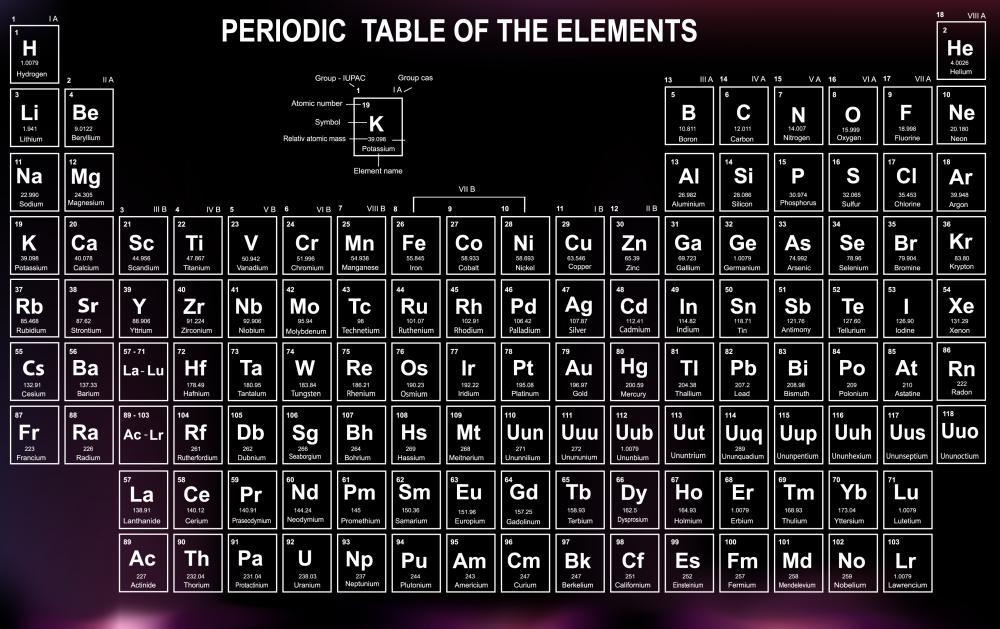At AllThingsNature, we're committed to delivering accurate, trustworthy information. Our expert-authored content is rigorously fact-checked and sourced from credible authorities. Discover how we uphold the highest standards in providing you with reliable knowledge.
What is Cobalt?
Cobalt is a metallic chemical element that is rather hard and brittle in its pure form. It is used industrially in a number of ways, and is also refined to produce salts and isotopes that have other practical applications. In addition to being an important part of many products, cobalt is also a crucial trace element, necessary for human well-being. The grayish, slightly matte element is rarely available in pure form, but it can be found in numerous alloys.
The atomic number of cobalt is 27, and it is identified with the symbol Co on the periodic table of elements. The name for the metal is derived from the German word for “goblin,” a reference to the goblins which supposedly used it to replace valuable silver ores. The element was also considered a goblin because it tended to appear frequently with arsenic, a highly toxic element. When smelted, arsenic fumes would be released, threatening the health of workers.

One of the most well known uses of cobalt is for the blue dye extracted from its salts. This dye has been used for thousands of years, with samples appearing in Egyptian and Greek tombs. The metal itself is often used in alloys to create things like magnets or metals that can withstand high temperatures. These high temperature alloys are used in things like jet engines. In addition, cobalt can be broken down into radioactive isotopes, which have a number of uses in medicine, industry, and research.

Typically, cobalt is found near nickel, lead, copper, and silver ores. The metal appears in the form of an ore, typically heavily blended with other materials, so that it needs to be refined. Like many metals, it has ferromagnetic properties, and it may become spontaneously magnetized or hold a magnetic charge for long periods. This property makes cobalt a popular choice in alloys used to produce rare earth magnets.
As with some other trace elements, cobalt can be dangerous to human health if it is consumed in large amounts. Humans typically get all of the mineral they need by eating a balanced and healthy diet, although some animals may require supplements. In large dosages, cobalt can cause harm to the heart and lungs. The radioactive isotopes, used in a variety of medical treatments, can also be very harmful, and their usage is carefully controlled as a result.
Frequently Asked Questions
What is cobalt and where is it commonly found?
Cobalt is a chemical element with the symbol Co and atomic number 27. It's a hard, lustrous, silver-gray metal found in the Earth's crust. Cobalt is typically extracted as a by-product of nickel and copper mining. Significant cobalt reserves are located in the Democratic Republic of the Congo, which, according to the U.S. Geological Survey, holds more than 50% of the world's cobalt reserves.
What are the primary uses of cobalt?
Cobalt is essential in the production of high-strength alloys used in jet engines and gas turbines. It's also a critical component in lithium-ion batteries, which power electric vehicles and portable electronics. Additionally, cobalt is used in the manufacturing of magnets, catalysts, and pigments for glass and ceramics.
Why is cobalt important for battery technology?
Cobalt is crucial for battery technology because it improves the energy density and longevity of lithium-ion batteries. It stabilizes the battery structure during charging and discharging, which is vital for the performance and safety of these batteries. Cobalt's role is so significant that it's often referred to as the "glue" that holds the battery materials together.
Is cobalt mining associated with any ethical concerns?
Yes, cobalt mining, particularly in the Democratic Republic of the Congo, has been associated with serious ethical concerns, including child labor and hazardous working conditions. Efforts are being made to improve the transparency and sustainability of cobalt sourcing, with organizations and companies working towards more responsible mining practices.
How does cobalt impact the environment?
Cobalt mining can have detrimental effects on the environment, including water pollution and habitat destruction. The process can release harmful elements into the soil and waterways, affecting local ecosystems. As demand for cobalt rises, there is an increasing need for mining practices that minimize environmental impact.
Are there any alternatives to cobalt in battery production?
Researchers are actively seeking alternatives to cobalt in battery production due to its cost, ethical, and supply concerns. Promising substitutes include nickel-rich chemistries and lithium iron phosphate (LFP) batteries, which do not require cobalt. However, these alternatives often involve trade-offs in terms of energy density and battery life.
AS FEATURED ON:
AS FEATURED ON:












Discussion Comments
@stolaf23, cobalt is an essential trace element, and it works along with some other nutrients,like vitamin B12.
I'm a little confused about whether or not cobalt is actually beneficial in some way, or people just manage to eat trace amounts of it in their diets.
Post your comments